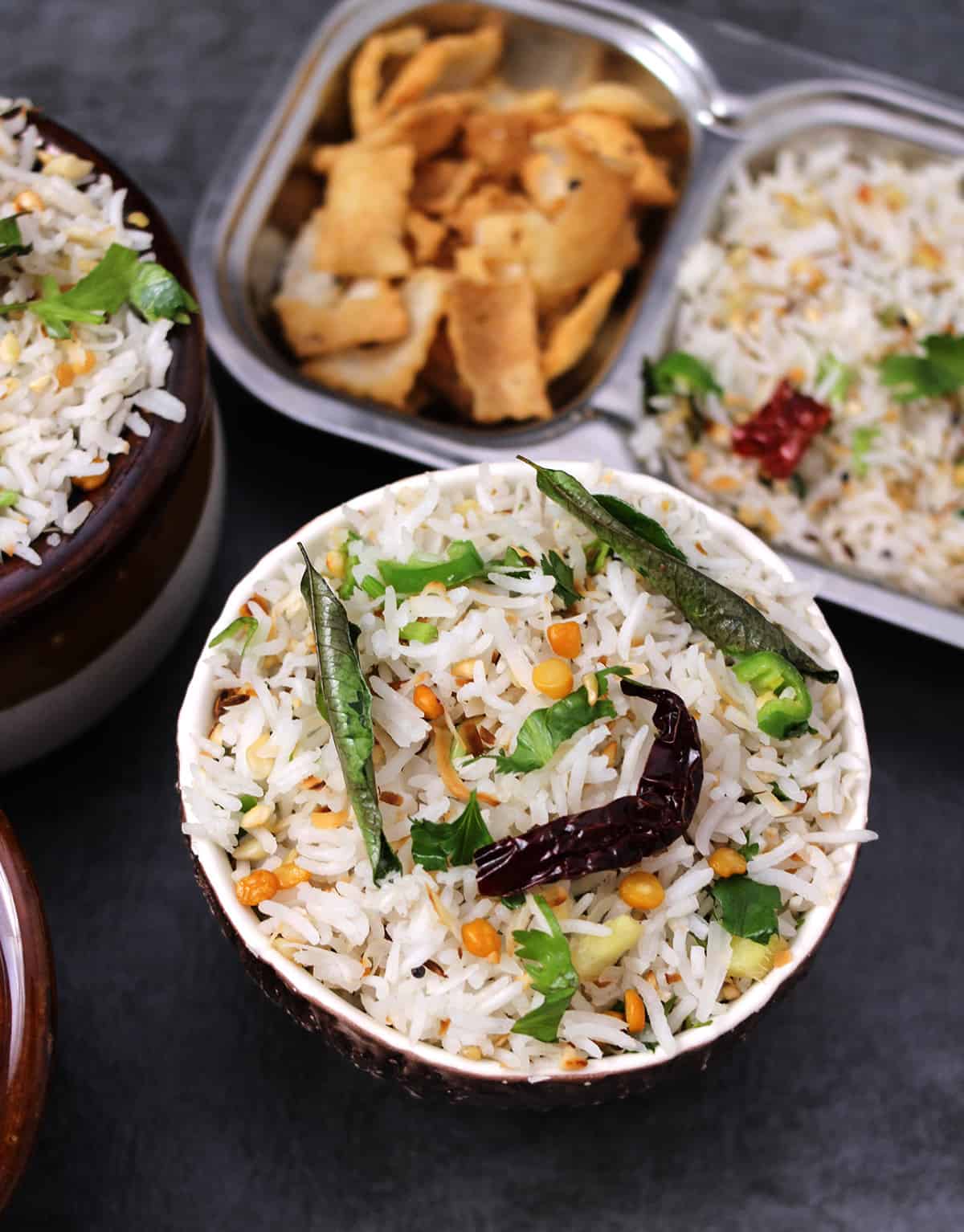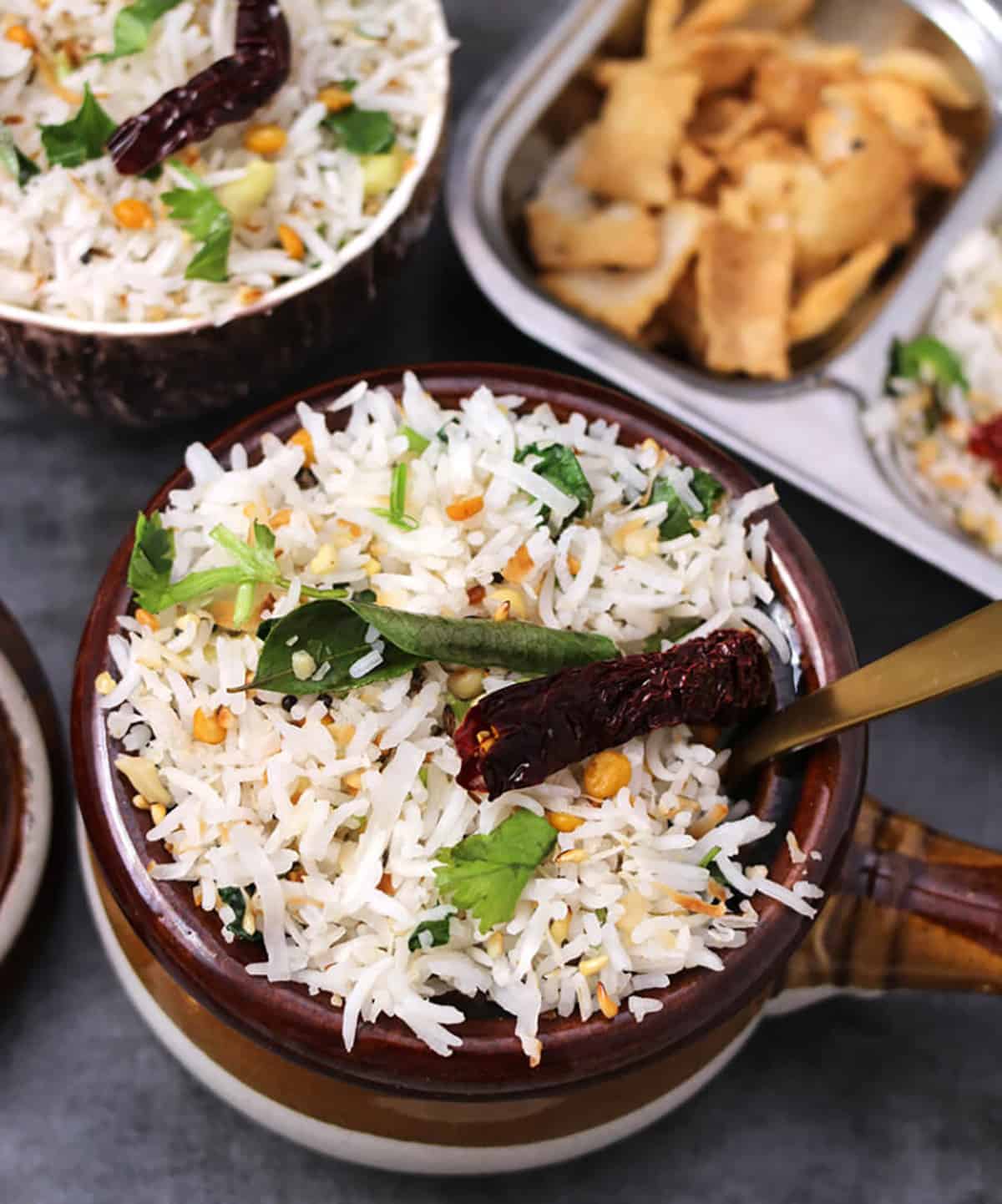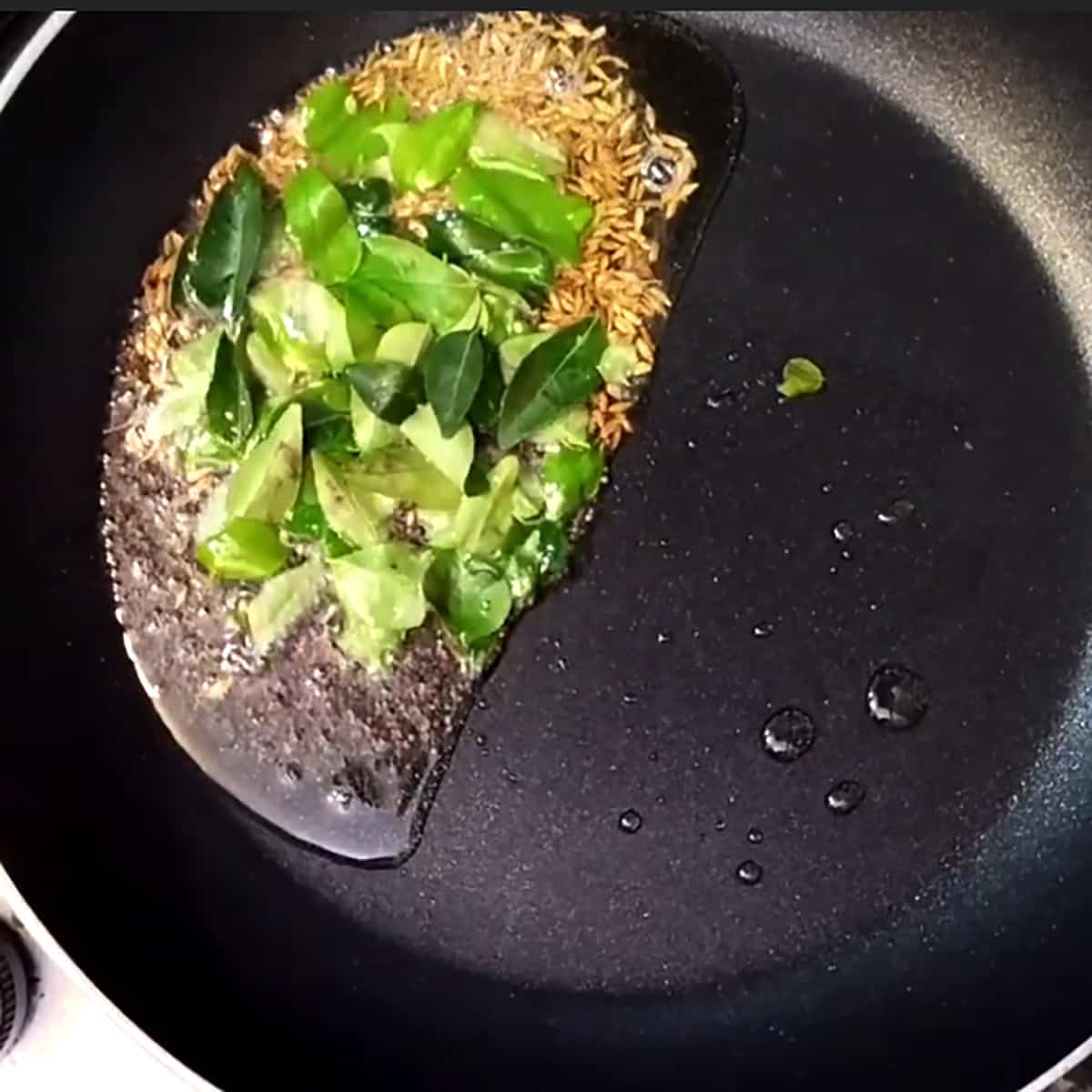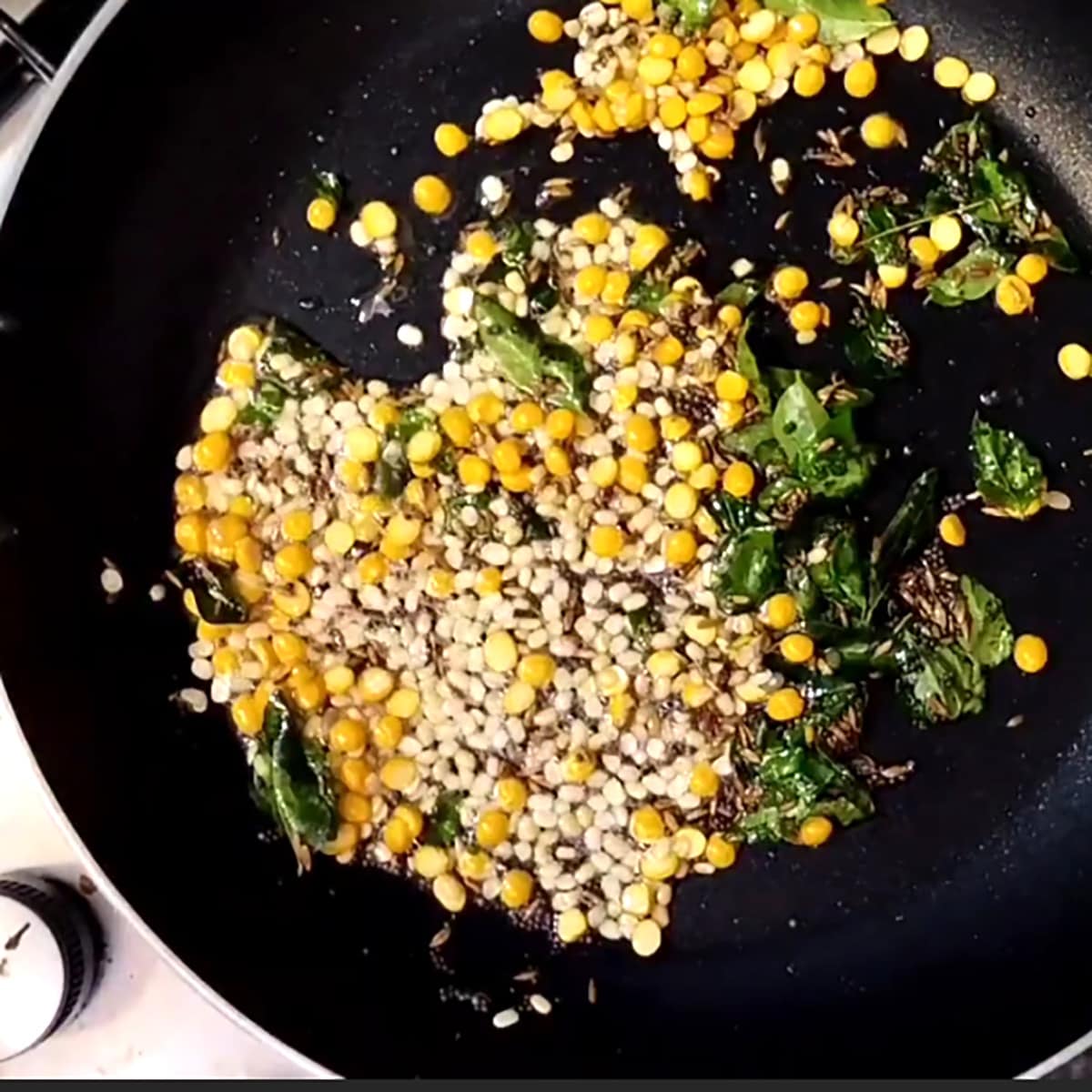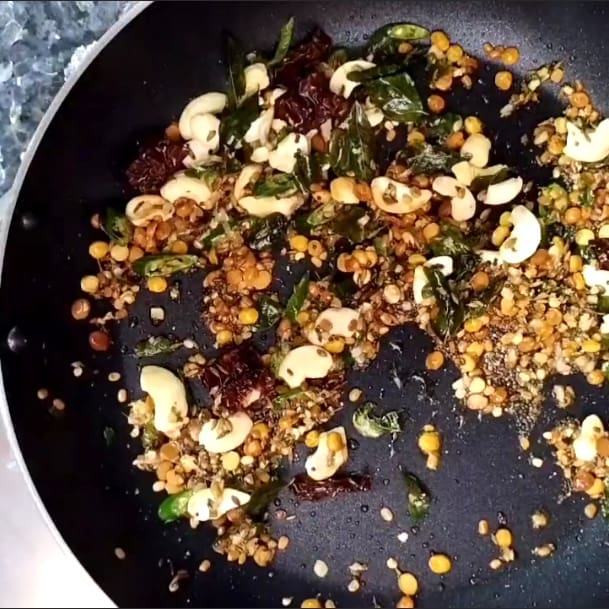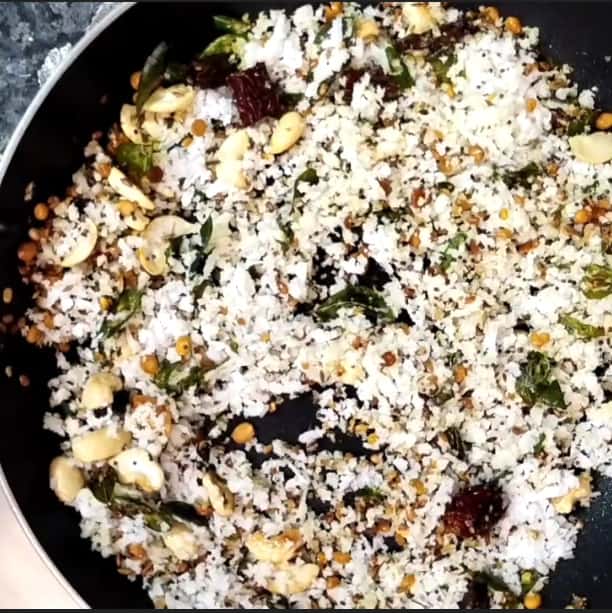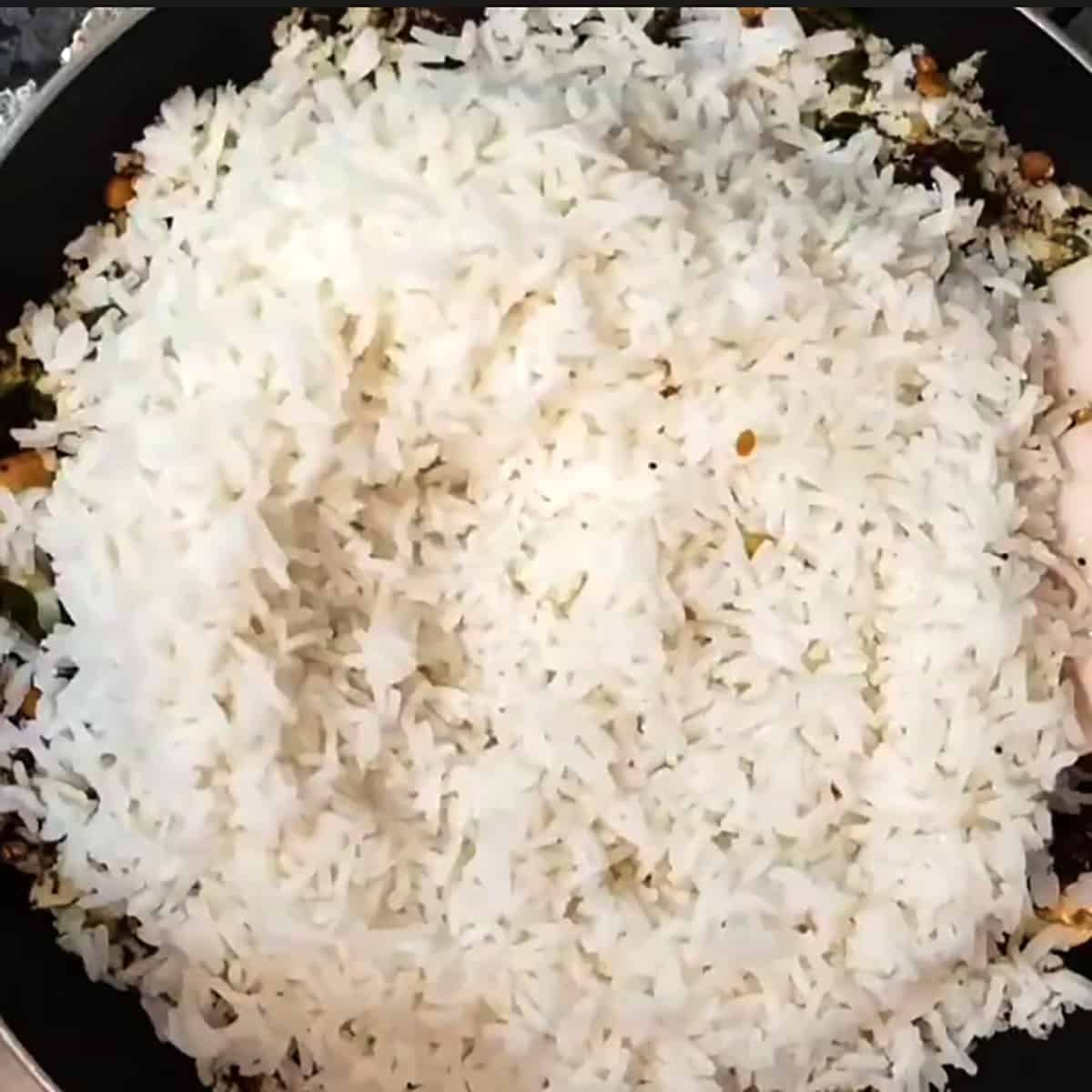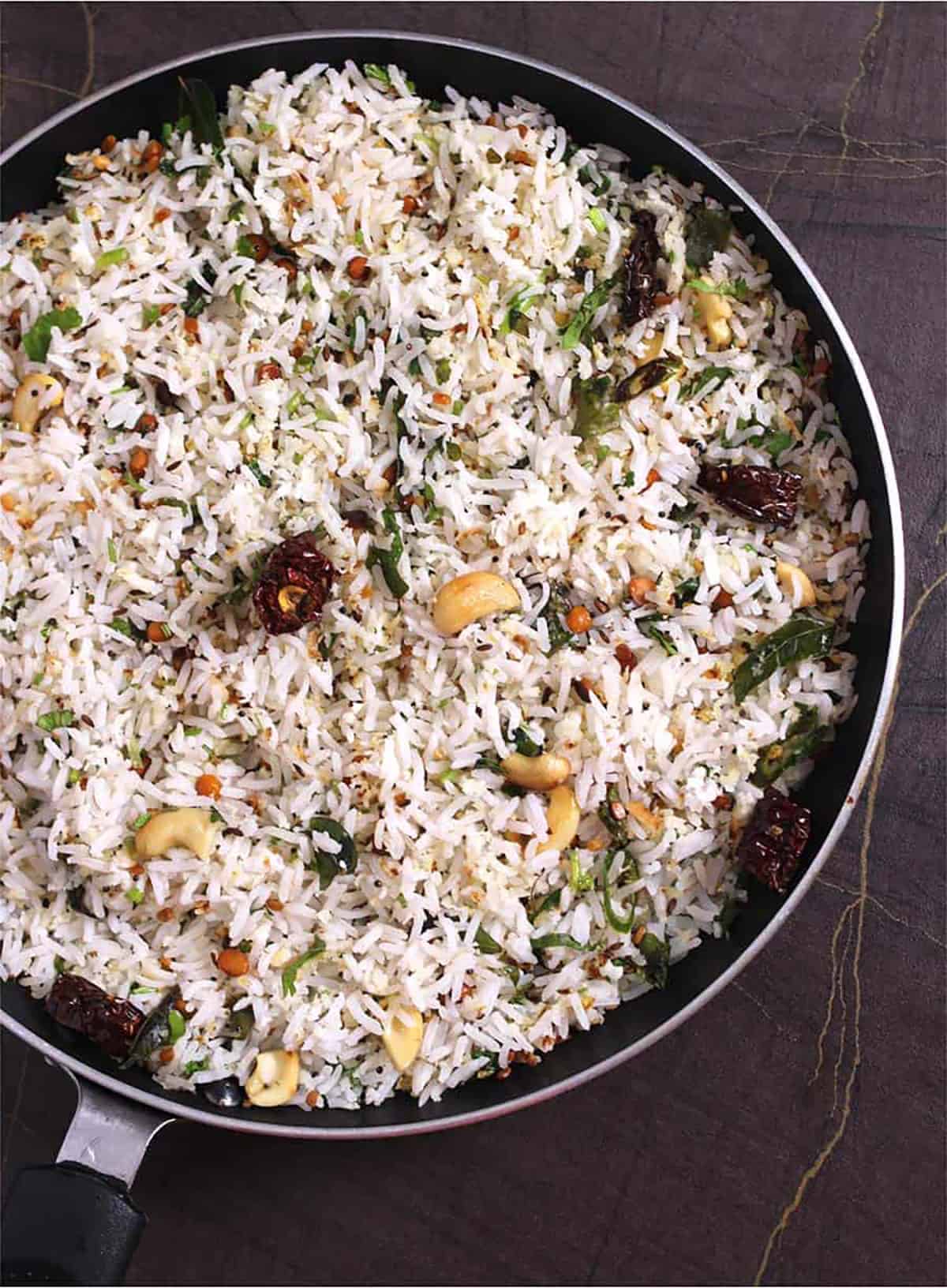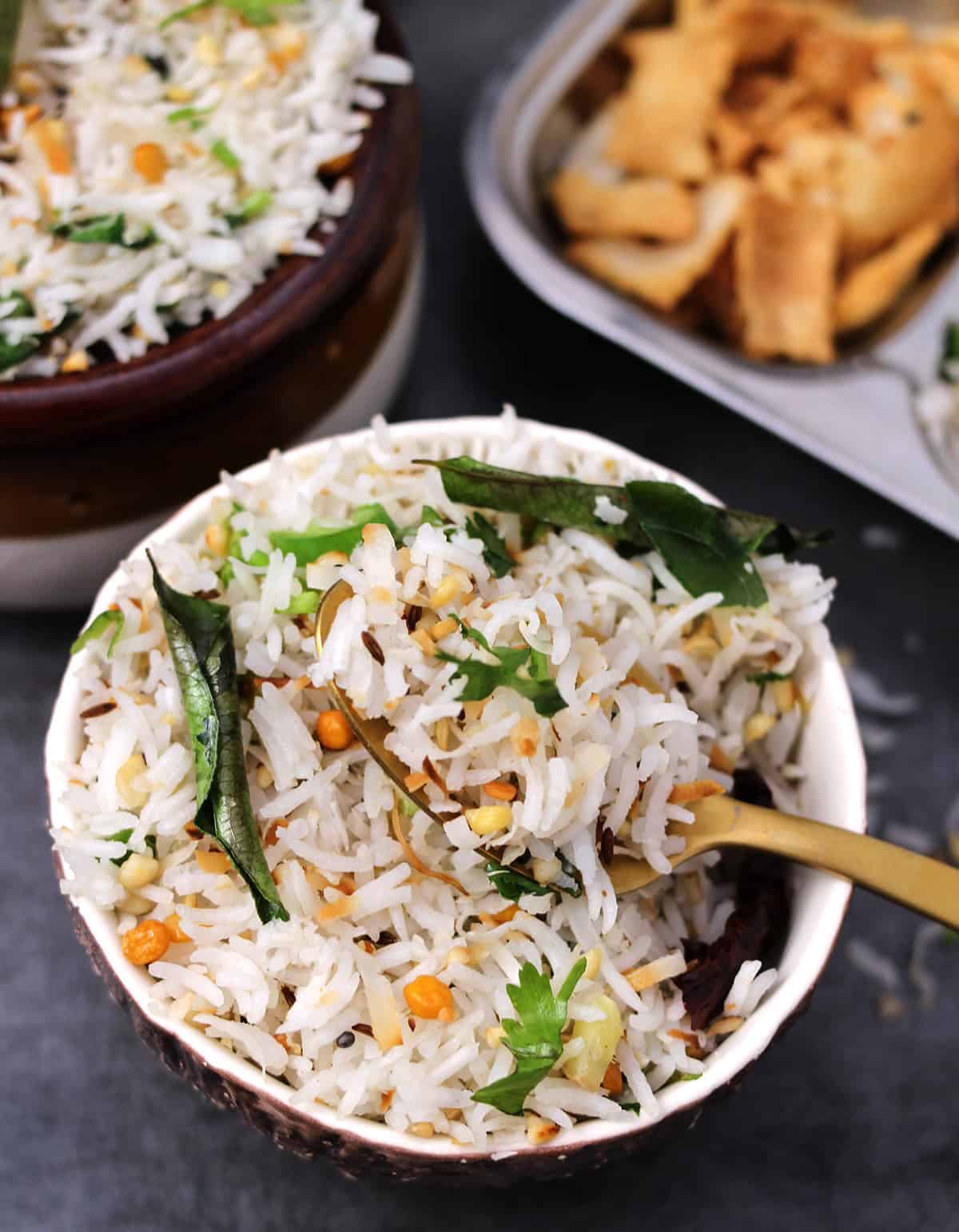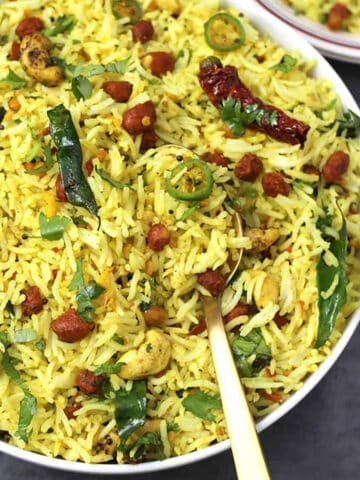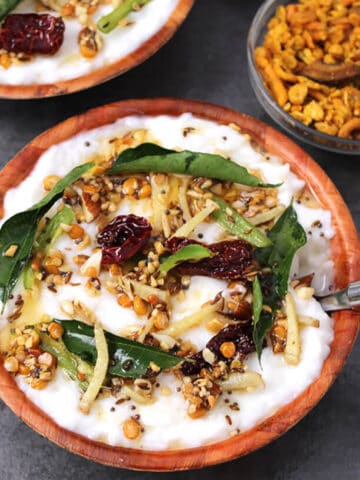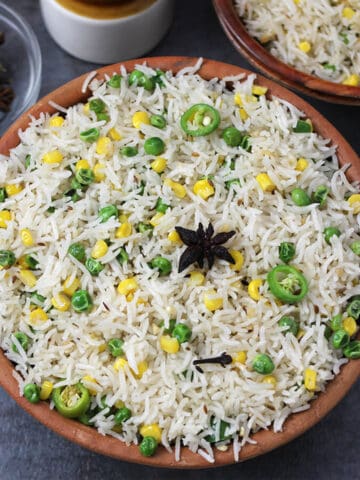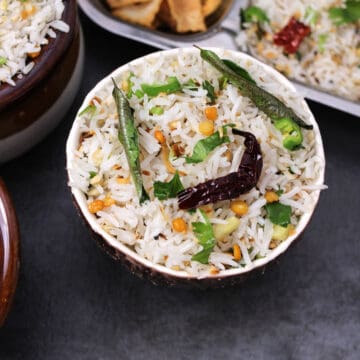Don’t miss to check out traditional lemon rice (chitranna), temple style ghee rice or South Indian curd rice.
About the recipe
Coconut rice is made using simple ingredients like freshly grated coconut flakes and cooked rice and tempered with spices like chilies, ginger, hing, and cashews which makes this rice unique and nutty flavorful. In South India, kobbari annam is prepared at temples and offered in the form of prasadam and at home during festivals like Navratri and special occasions. As the name suggests, the key ingredient here is coconut (nariyal, kayi, or thengai). It is believed that the Goddess Lakshmi blesses devotees with health and prosperity and fulfills all their wishes when offered coconut or bhog prepared with coconut. You can check the significance of 9 days of Navratri and food recipes here. This rice is also called nariyal chawal in North India, kobbari annam in Andhra Pradesh, thengai sadam in Tamil Nadu, kayi anna in Karnataka, thenga choru in Kerala. We like to have this for breakfast, lunch, dinner, or even for lunchbox. Since it tastes good when served warm or at room temperature, it is one of the best rice recipes for your long travels, potlucks, and picnics. There are variations in which this rice is made. Some use coconut flakes, while others use coconut milk to make the rice. You can also check my recipe for rice cooked in coconut milk in a pressure cooker. Another special recipe made with new rice during Navratri in coastal regions.
Thai coconut rice vs Indian coconut rice
Thai coconut rice, also known as “khao man gai” “coconut milk rice” or “khao mok gai,” is a popular dish in Thailand made by cooking Thai jasmine rice with coconut milk, which gives it a creamy and rich texture. This rice is flavored with aromatic ingredients like lemongrass, ginger, and kaffir lime leaves. Indian coconut rice, also known as “thengai sadam” “kobbari annam” or “nariyal chawal,” is a South Indian dish made by tossing cooked basmati rice with grated coconut and traditional Indian tempering or tadka with spices. Both are delicious coconut rice-based dishes that are worth trying.
Ingredients
Rice: Long-grain basmati rice works best. Feel free to use any flavorful rice or even leftover cooked rice. See that the rice is fluffy and not mushy. Coconut: Traditional rice recipe uses freshly grated coconut. You can use dry coconut flakes or frozen ones too. Tempering or tadka: Use coconut oil for tempering to get the coastal flavors. Other ingredients are mustard and cumin seeds, hing, curry leaves, urad dal, chana dal, cashews, ginger, red chili, and green chili. See the recipe card below for a full list of ingredients and measurements.
Step by step instructions
Step 1: You can cook the rice in a pot, pressure cooker, or instant pot. Any preferred method of your choice. See that the rice is fluffy and not mushy.
Tips
Adjust the amount of coconut and tempering to your liking. You can add salt while cooking rice or later while adding rice to the tempering. To make this gluten-free, simply skip the asafoetida or hing. For a more intense rice flavor, you can also cook the rice in coconut milk if desired. For coastal flavors, temper with coconut oil.
Storage Suggestions
You can store any leftover rice in an airtight container in the refrigerator for two days. Just sprinkle water and reheat it in the microwave or a pan before serving. If you want to store this coconut white rice for a longer period, you can freeze it in an airtight container for up to 2 months. Thaw and reheat when serving.
More South Indian Rice Recipes
South Indian rice dishes are easy and quick to make, and the flavor comes from the combination of tempering or tadka you add. You actually don’t need any measurements. Add them, especially nuts and chilies, to your liking. If you are a bachelor or beginner, you should try cooking South Indian rice recipes first because they are very simple. These rice recipes also make a very good lunchbox recipe. Did you like this recipe? Please leave a star ⭐️⭐️⭐️⭐️⭐️ rating below and/or a review in the comments section. You can also stay in touch with us through social media by following us on Pinterest, Facebook, Instagram, and Twitter.
Recipe card
This Indian rice (nariyal chawal or thengai sadam) was first published in Sep 2019. Updated with step-by-step pictures and more details.
